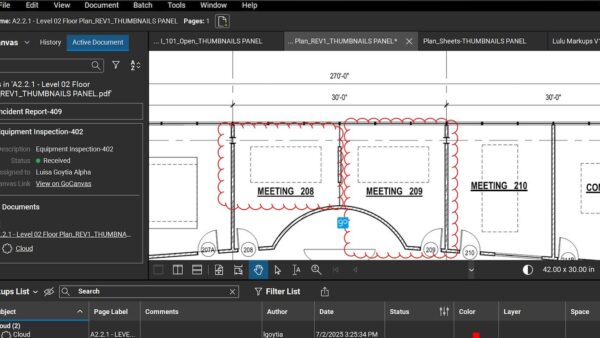
The flexibility of ISO 19650 is key to nurturing the deployment of effective information management in the developing world, according to Birmingham City University associate professor Dr Mohammad Mayouf MCIOB and Tala Damra, managing director of IVY, a digital construction consultancy in Jordan.
Globally, ISO 19650 standards are steadily gaining acceptance in the industry as a foundational framework for effective and efficient management of information in construction projects. Evolving from the PAS 1192 developed in the UK, the ISO 19650 establishes a universally agreed approach to manage project information, enabling a structured, collaborative environment that mitigates risks associated with inconsistent data handling.
The core purpose of ISO 19650 in digitally-enabled projects is to unify workflows across different project phases through recommendations that aim to create a shared language and standardised practices. However, the unique complexities and challenges faced by developing countries reveal that the recommendations and workflows promoted by ISO 19650 are not universally straightforward to implement.
Workflows in developing countries: striking the balance
From varying regulatory frameworks to gaps in digital skills and inadequate infrastructure, multiple factors make adopting ISO 19650 workflows particularly challenging in developing countries. For instance, data management on a largescale project like NEOM or Red Sea Global requires highly developed technological infrastructure, and solid information management knowledge and practices from a digitally skilled workforce across the entire supply chain – a combination that cannot be achieved overnight.
For many projects of similar scale, the challenge is not in the design and delivery of the projects themselves, but in managing cross-border collaboration and exchange of information among a vast array of stakeholders, disciplines and technologies. In such cases, a delicate balance is needed between ISO 19650-compliant workflows and local practices, resources and digital readiness, which, in some cases, proves difficult to achieve.
ISO 19650 implementation must go beyond formal adherence to rigid templates; workflows should be designed with sensitivity to local practices and level of digital literacy, while aligning with the recommendation of the suite of standards and best practices.
Not just the engine – the gears must turn in sync
ISO 19650 has the potential to be a transformative tool for developing countries, providing a scalable, structured approach to sustainable information management. To realise this potential, however, establishing appropriate workflows is crucial in overcoming the challenges unique to developing regions.
Metaphorically, ISO 19650 can be likened to the engine of a well-built machine, powering progress by providing a structured approach to information management. However, for this engine to drive success, the gears – representing workflows – must turn smoothly and in sync. Stakeholders act as the operators, adjusting these gears as the project moves through different phases. Without carefully aligned workflows that fit both international standards and local contexts and regulations, the engine alone won’t propel projects forward.
ISO 19650 provides recommendations rather than rigid rules for information management, allowing flexibility in its application across diverse contexts. This flexibility enables the standard to act as the engine that powers more efficient information management on projects, particularly in developing countries, where digital knowledge is on the rise and industry professionals are still building their digital capability and capacity.
A flexible, phased approach to implementation is essential: one that accounts for local practices and the current level of digital maturity, ensuring a sustainable progression toward full compliance with ISO 19650. With this approach, ISO 19650 can lay the foundation for long-term improvements in project efficiency and collaboration across the construction industry.
To stay up to date with BIM, information management and digital construction news, subscribe to the CM Digital newsletter.














